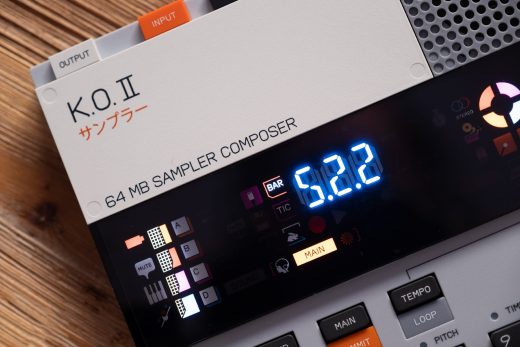Teenage Engineering’s K.O. II sampler proves the company can do cost-friendly cool
Teenage Engineering’s K.O. II sampler proves the company can do cost-friendly cool
It’s all relative, but the EP-133 could be the first in a series of more affordable music gear.
There’s something of a theme running through Teenage Engineering’s recent products. That theme is you need more money. The Field range represents the Swedish company’s most exclusive music making gear. So when its website teased a new product with a colorful countdown, the wallets of Teenies everywhere braced for impact. Once that timer hit all zeros, the big reveal turned out to be the EP-133 sampler. Or, to give it its full name, the EP-133 K.O. II 64MB Sampler Composer. The real surprise though, was that it both looked cool and, at $299, was reasonably priced.
Fadergate
The countdown was really just the start. Barely 24 hours after the K.O. II was revealed units started landing in buyers’ hands. Within days, YouTube was awash with first look videos and tutorials. Before our review unit even showed up, several users were complaining that theirs had defective faders. Enough folks were having this problem that it quickly became known as “fadergate.” One brave creator even took their unit apart and, possibly, discovered the cause — the internal pins were bent and not making a connection. I asked Teenage Engineering about the issue and will update this story once I hear back.
Some buyer’s theorized that the issue might be caused by the fact that the K.O. II ships without the caps on its rotaries and fader. They come loose in the box to enable the packaging to be flatter, but the cap for the fader is unusually tight fitting. This led to speculation that the enthusiasm required to push this cap down might be putting too much pressure on components inside, opening up the cruel possibility of users breaking their own devices before they even got to play with them. I used extra caution, along with some needle-nosed tweezers to support the fader as I applied its cap and so far… so good?
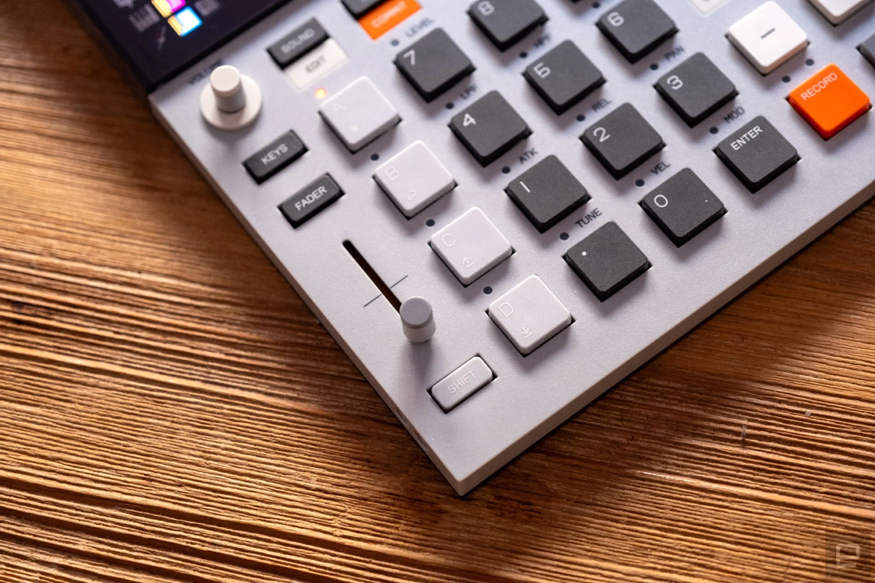
The K.O. II name tells us that Teenage Engineering considers this something of a sequel to the original PO-33 K.O. Clearly the K.O. II isn’t a Pocket Operator, but its retro desk calculator aesthetic does take subtle design cues from that series. At 12-inches diagonally, it’s in iPad territory size-wise. The K.O. II also runs on AAA batteries (or USB power) which is another nod to the PO series. It’s hard to say how long it’ll run on those batteries and it’ll vary from brand to brand, but I’ve been using some cheap rechargeables for over a week and they seem to be going strong.
Personally, I was never particularly enamored with the Pocket Operators and much prefer the form factor of the K.O. II. It’s still very portable, but feels a bit more “serious.” It’s also just very nice to look at, which is something Teenage Engineering is quite good at. The model number, EP-133, indicates that we might see others in the line, so fingers crossed for giant calculator versions of other instruments, too.
In use
Fader fully checked and batteries in place, the K.O. II springs to life with a flourish of icons across its display. Those icons are actually fixed and not made up of pixels. Teenage Engineering calls it a “Super segment hybrid display” which basically fuses the digital watch part with a bunch of colorful, cute custom icons to let you know when certain modes or features are activated. It reminds me of the old Game & Watch handhelds where you can see where all the icons are and they are simply switched on or off as needed. Some of the icons are pretty abstract but there is a guide on the website to let you know that, for example, the red umbrella means undo.
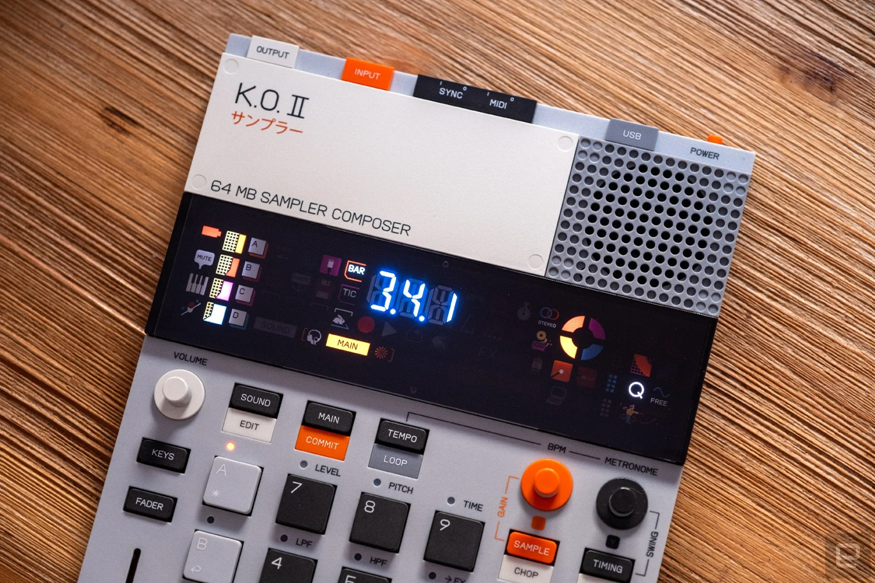
Something I like to do with music gear is to see how easy it is to use without reading the manual. This works for all gadgets of course, but with music gear there are common tasks like sequencing, timing adjustment, automation and so on. How you achieve these on a drum machine might be very different to a keys-based synth. Teenage Engineering in particular likes to do things its own way but I was pleasantly surprised with the K.O. II. Within minutes I had managed to figure out basic navigation and how things are organized (sample groups, accessing shift functions, what the fader does and when and so on).
During this blind test I also got to know the K.O. II’s buttons and faders. It was obvious from the launch materials that we weren’t getting rubber MPC-esque pads here but I would describe the ones on the K.O. as keys rather than buttons. Fortunately they are satisfying to click and they’re pressure sensitive so you can give your drum hits different velocities or play notes at different strengths, just be sure to focus on the lower part of the key as that seems to be where the sensor is.
You probably should read the manual though. If for no other reason than it’s likely the prettiest one you’ll use in a while. There’s also a very cute tool for managing your samples which works via desktop browser. For the brave, you can also use this on your phone if you have Android (Chrome, Brave and Opera should all work). On iOS the same browsers can’t access Web MIDI and therefore will not work. (There’s the iOS Web MIDI Browser which crashes when I tried it with an iPhone but it does connect so your mileage may vary.) The K.O. II won’t show up on your PC as either a drive or an audio interface, so the main uses for the USB port are power and sending/receiving MIDI.
The workflow for grabbing sounds is pretty straightforward. If you want to sample from either a PC or phone or other sound-making device then as long as you can connect it to a 3.5mm cable you’re golden. For everything else, you’ll be using the built-in mic, which is surprisingly good. I recorded a few short vocal phrases and other found sounds and they come out well, assuming you’re in a quiet environment.
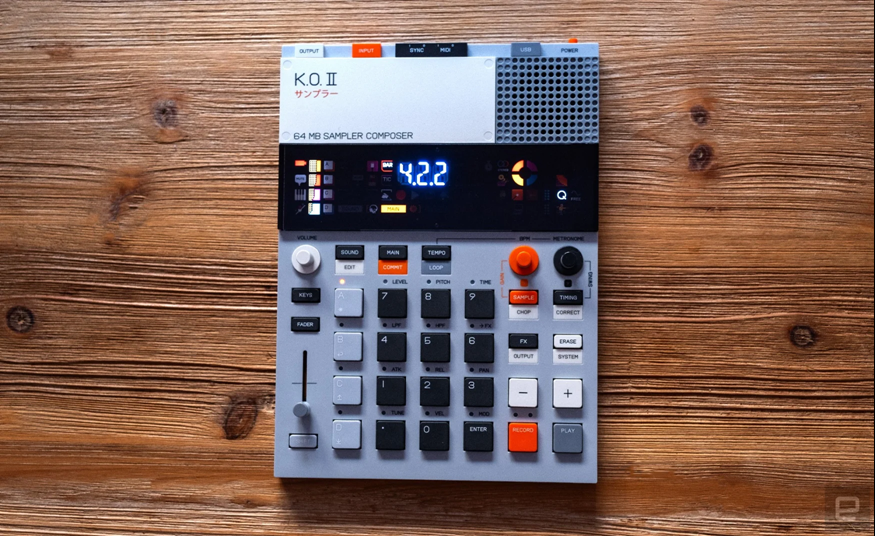
Don’t worry though, if you don’t have a bunch of samples yet, the K.O. II comes with a bunch pre-installed, and they’re pretty great. There’s a good mix of drums, bass pads and lead sounds — certainly enough to get you going straight away. You’ll definitely want to add your own though to make your projects unique. The presets use about half of the 64MB of memory, but you can back them up, delete them and free the slots up for your own. Max sample length is 20 seconds (same as on the OP-1 Field).
If 64MB doesn’t sound like a lot, know that it translates to about 11 minutes of samples at the 46kHz/16bit in which the K.O. II records. You can halve that time if you sample in stereo. Even if you go all out, over five minutes of samples should be plenty enough for most songs (we hope). If there’s going to be a bottleneck, it’ll more likely be due to the 12-voice limit. This means the K.O. II can make 12 sounds at once, so if you have six stereo samples playing at one time, you’ll hit that limit. My compositions aren’t interesting enough to hit that threshold, but if you’re a maximalist, then it’s worth keeping in mind.
A common technique to help avoid hitting the voice limit on other devices is resampling — basically merging separate sounds down into one new sample. This is also the technique for baking in any effects and modulation, which, given that the K.O. II can only manage one master effect at any one time makes the lack of resampling all the more obvious. Understandably, it’s possibly the biggest complaint among users I’ve seen so far (after fadergate of course).
There are ways around this, but it would involve recording out into another device and then sampling that back into the K.O. II and no one should have a sampler for their sampler, not in this economy. Teenage Engineering does have a decent track record of adding functionality via firmware updates — the company just added a new effect to the OP-1 Field as I wrote this — so fingers crossed.
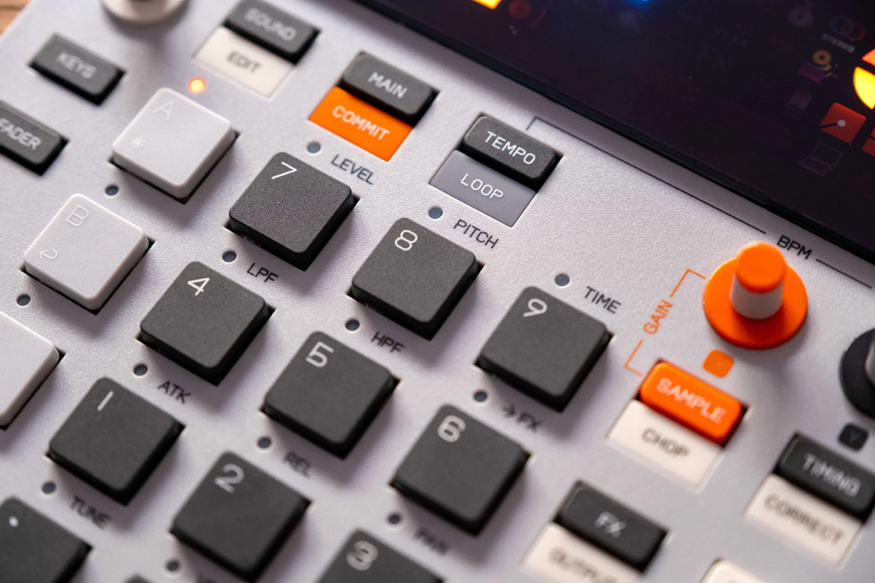
While we’re on the topic of features the K.O. II doesn’t have, there doesn’t appear to be any kind of song mode. There are four sample “groups” that you can think of as tracks (drums, bass, lead and so on). Each of these groups can hold up to 99 patterns and patterns can be up to 99 bars in length. The active patterns across the four groups can be saved as a “scene” and scenes can be triggered consecutively. But, importantly, there’s no way for that to happen automatically right now. This means if you wanted to tease a whole recorded song out of the K.O. II you’ll have to either get clever with MIDI or trigger scenes and patterns manually in real time.
This performative nature might be a burden for songs, but I found it to be a feature in other areas. On top of the master effects you also have 12 “punch in” effects that can be applied — or punched in — by holding down the FX key and then any of the 12 black pads. Each is marked with its effect name (Level, Pitch and so on). These punch-in effects express themselves differently based on the amount of pressure you apply, making it a very expressive experience. The effects on these keys also correspond to modulation tools when used with the fader. So FX+7 adds the “Level” punch-in effect (rhythmic gating) while Fader+7 will assign gain/level to the fader until you choose another modulator such as Attack or Low Pass Filter.
I swear, half of the things you learn about how to use the K.O. II happen by accident. Yes, it’s in the manual, but I discovered you can solo groups by pressing the FX button and the corresponding group. You can also press multiple buttons to “solo” multiple groups or sounds at the same time. With a group or group solo’d you can then apply punch-in effects to create a lot of variations in real time. With so many touches like this, I am starting to assume that Teenage Engineering envisioned the K.O. II as a playful performative device rather than a linear song-making machine.
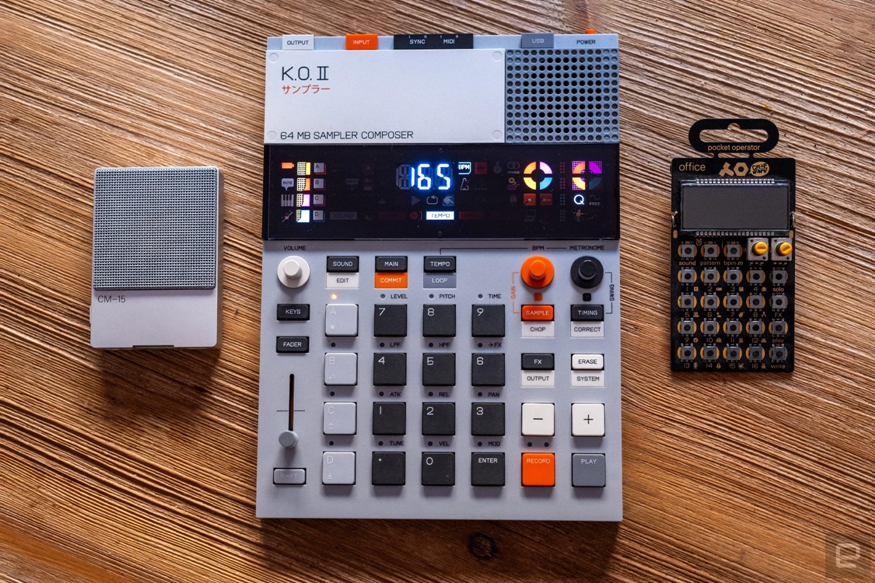
I’ve talked before about the sort of “magic” factor that Teenage Engineering sometimes hides into its products. Just small, cute and often a bit hidden features that aren’t necessary but are tons of fun. A common one is the inclusion of FM radio on the OP1/Field and OB 4 etc. Or the video making tool in the app for the OP-Z. There was a brief moment of excitement when I spotted “loop mode from OB-4” on the K.O. II’s product page. The hope being the two devices would interact somehow, but it appears that’s just a way of describing the looping feature that’s been borrowed from the OB-4.
As I write these closing thoughts, the second official firmware update (v1.1.1) has just been released. There’s nothing spicy in here like motion control or sampling the radio, but it’s confirmation of what I mentioned earlier about Teenage Engineering adding features after a product hits the shelves — such as the OP-1 Field’s vocoder synth that landed over six months after release or the fairly substantial 1.2.38 update for the OP-Z which came almost three years into its life.
The K.O. II represents an opportunity for Teenage Engineering to do the unthinkable and create a series of more capable instruments that don’t cost Field-series levels of money. As a sampler, it’s great for beginners or those who love a more performative style. It’s not nearly as detailed and in-depth as something like Roland’s SP 404 or Native Instruments’ Maschine, but it was never going to be a rival to, well, anything really. Fadergate aside, this is a promising product from a company that has tested the loyalty of its fans more than usual in recent years.
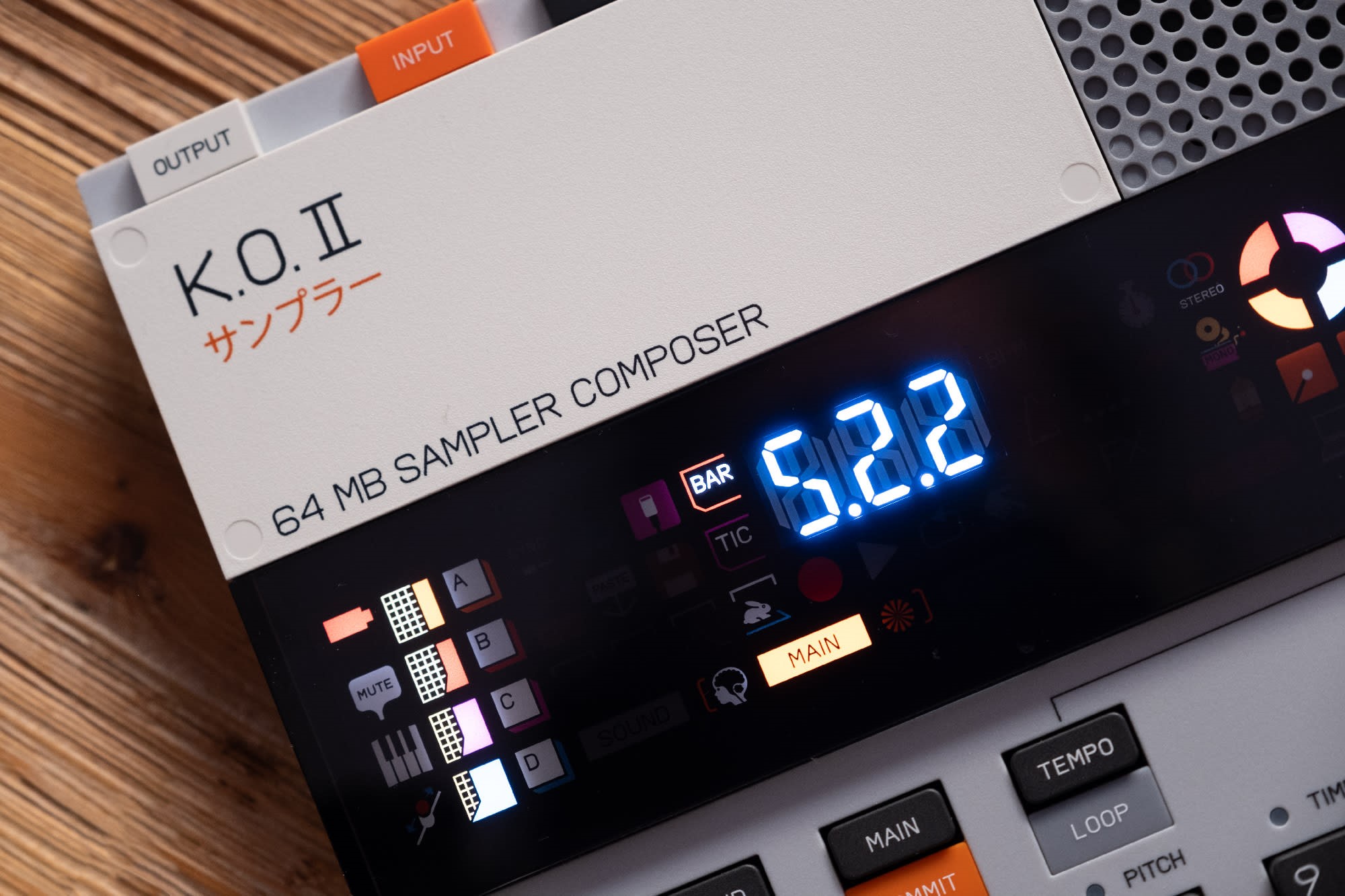
(5)

